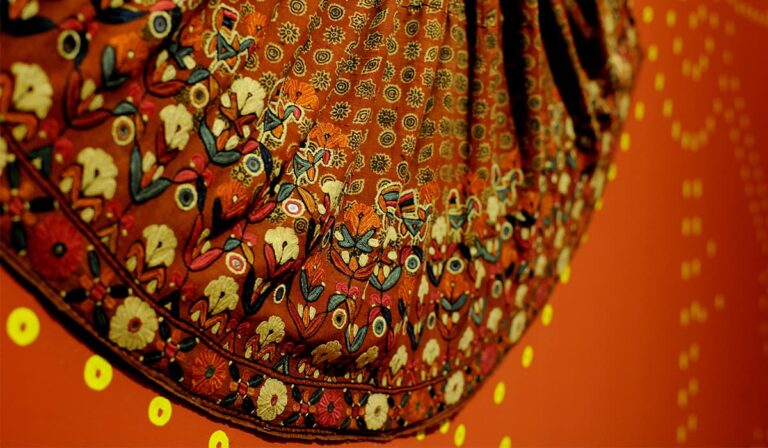In the rich tapestry of worldwide fabric traditions, sure practices stand out for their specialty and cultural importance. Banais, an frequently ignored yet captivating textile artwork, is one such culture that encapsulates the essence of its cultural origins even as supplying a completely unique aesthetic appeal. This article delves into the elaborate international of banais, exploring its history, strategies, cultural importance, and modern relevance.
The Historical Roots of Banais
The origins of banais can be traced again to ancient civilizations, wherein textiles were now not simply practical items however symbols of popularity, identity, and creative expression. While the precise birthplace of banais is shrouded within the mists of time, proof indicates that this textile art flourished in regions regarded for their wealthy weaving traditions. It is assumed that the exercise commenced in the rural heartlands of a but-to-be-absolutely-recognized way of life, probable prompted by using neighboring areas renowned for his or her fabric craftsmanship.
Historical statistics and archaeological findings indicate that banais changed into to start with used for ceremonial garments and special activities. The fabric produced had been frequently embellished with difficult patterns and motifs that held symbolic meanings, representing the whole lot from fertility and prosperity to safety towards malevolent spirits.
Techniques and Materials
The creation of banais is a hard work-extensive manner that calls for a high degree of ability and patience. The traditional approach includes hand-weaving on looms, wherein artisans meticulously interlace threads to create complicated styles. The choice of materials is essential; traditionally, natural fibers such as cotton, silk, and wool had been used, each lending a one-of-a-kind texture and great to the finished product.
One of the most specific features of banais is its use of natural dyes. Artisans would extract colorings from plant life, minerals, and even insects, making sure that every piece of cloth was imbued with a colourful, yet earthy palette. The dyeing procedure itself become an artwork form, regularly related to a couple of degrees to acquire the favored hue and fastness.
The patterns in banais textiles are deeply symbolic and regularly passed down thru generations. Common motifs encompass geometric shapes, floral designs, and depictions of animals or mythological figures. Each pattern tells a tale, reflecting the cultural history and private studies of the weaver.
Cultural Significance
Banais holds a special place inside the cultural history of the groups that exercise it. Beyond its aesthetic appeal, the textile is a medium of storytelling and a repository of collective memory. The patterns woven into the fabric often deliver meanings which might be understood and preferred in the network, serving as a visible language that conveys social fame, marital fame, and local identification.
In many cultures, banais textiles are essential to rituals and ceremonies. They are used in weddings, funerals, and non secular festivals, where their presence is thought to carry proper fortune and protection. The manner of creating banais is likewise a communal activity, fostering social bonds and preserving traditional knowledge through generations.
Contemporary Relevance
In the modern-day world, wherein heavily produced textiles dominate the marketplace, the artwork of banais faces numerous demanding situations. The exertions-extensive nature of the craft, coupled with the declining number of professional artisans, threatens its survival. However, there may be a growing movement to hold and revitalize this historical tradition.
One of the ways banais is being saved alive is thru the efforts of cultural preservation agencies and artisan cooperatives. These agencies paintings to file traditional techniques, offer schooling to new artisans, and create sustainable markets for banais textiles. By connecting weavers with a international target market, they assist make certain that the craft remains economically feasible.
Moreover, there is an increasing appreciation for handmade, sustainable, and ethically-produced textiles amongst clients. Banais, with its rich records and precise aesthetic, appeals to individuals who value craftsmanship and cultural historical past. Designers and style houses are beginning to incorporate banais textiles into their collections, mixing traditional styles with modern styles to create modern and meaningful portions.
The Future of Banais
The future of banais depends on a sensitive balance among maintenance and innovation. To sustain the craft, it’s miles important to hold the authenticity of conventional strategies at the same time as additionally adapting to converting market demands. This requires a collaborative effort between artisans, designers, cultural agencies, and customers.
Education plays a critical function on this procedure. By elevating consciousness about the cultural and historical importance of banais, we will foster more appreciation and assist for this textile art. Workshops, exhibitions, and educational research can all make contributions to a deeper knowledge and recognize for banais, encouraging extra people to engage with and spend money on its future.
Furthermore, integrating modern-day technology with traditional practices offers exciting possibilities. For instance, digital tools can help file and percentage conventional patterns, while new substances and techniques can decorate the durability and versatility of banais textiles. By embracing innovation, we can make sure that banais remains relevant and continues to adapt as a living subculture.
Conclusion
Banais is extra than just a textile; it’s miles a testament to human creativity, resilience, and cultural continuity. Its problematic styles and vibrant colorations tell tales that join us to our past, even as its evolving bureaucracy replicate our present and future. By expertise and appreciating the rich historical past of banais, we can make a contribution to the renovation of this precise art form and make sure that it maintains to inspire and increase our lives for generations to come.
In a global in which the quick pace of modernity regularly overshadows the value of tradition, banais stands as a reminder of the beauty and importance of hand-crafted crafts. It invites us to sluggish down, appreciate the tricky info, and connect to the cultural narratives woven into each piece of cloth. As we circulate ahead, allow us to cherish and guide the artisans who keep this way of life alive, ensuring that banais continues to flourish and inspire.


